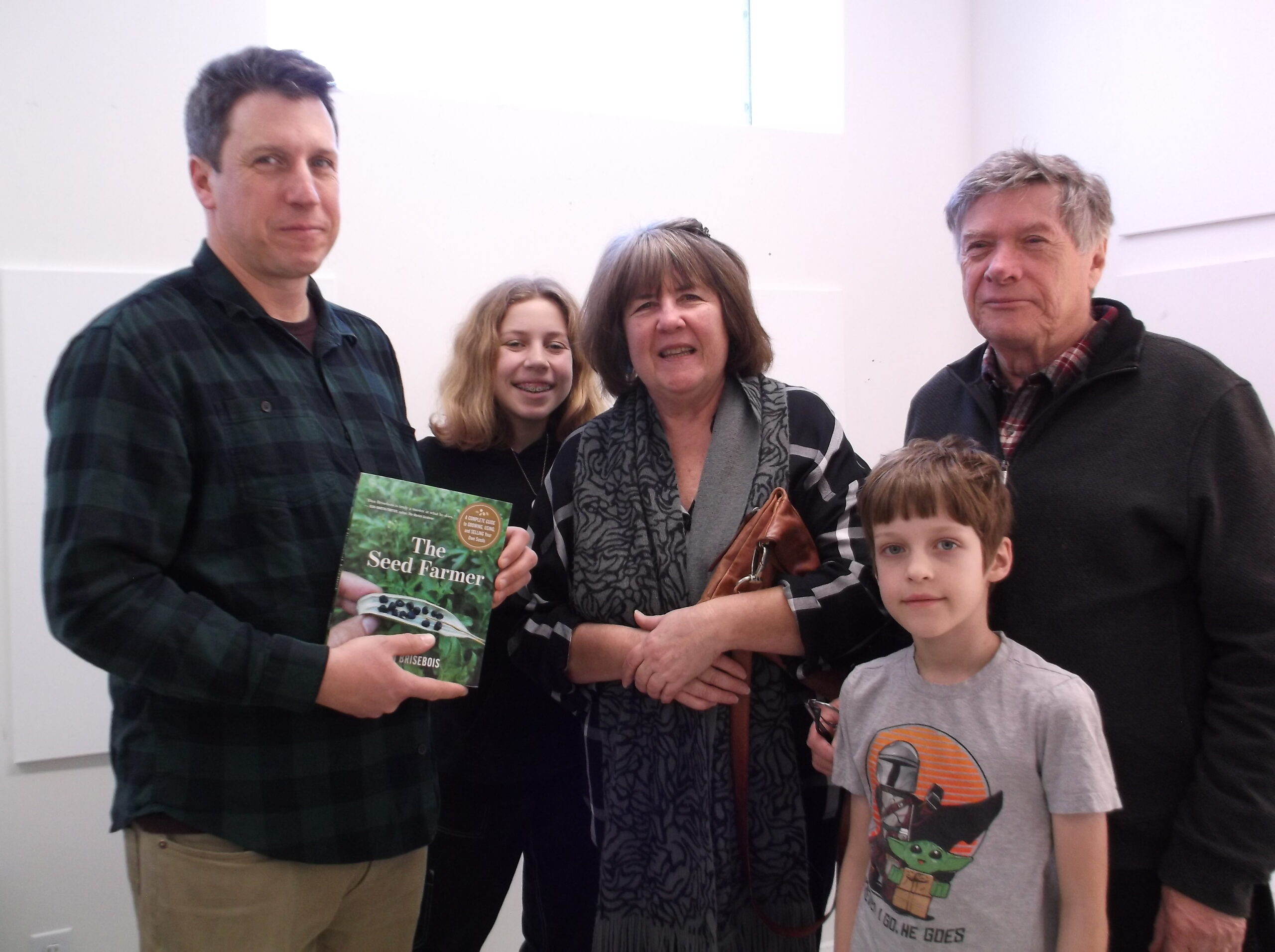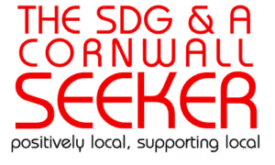Sharing his growing wisdom, The Seed Farmer – Dan Brisebois releases his newest book.
On Saturday, February 1st, Organic seed farmer and author Dan Brisebois gave a concisely informative and animated presentation promoting his newest book, The Seed Farmer: A Complete Guide to Growing, Using, and Selling Your Own Seeds, to a standing room only audience in the multi-purpose room at the Cline House Art Gallery in Cornwall.
In the header photo, from left to right: are Author Dan Brisebois with his family, Stella, Maureen, Henry and Ron, at the book launch of his second book, The Seed Farmer.
A graduate of McGill’s B. Sc. Agricultural Engineering Program, Brisebois learned the basics of seed harvesting over the last two decades at the Tourne –Sol cooperative in Cedars (les Cedres), Quebec. He has now turned this
“relationship” with his seeds into a book filled with practical information,
peppered with humour, that even people lacking a green thumb can follow.
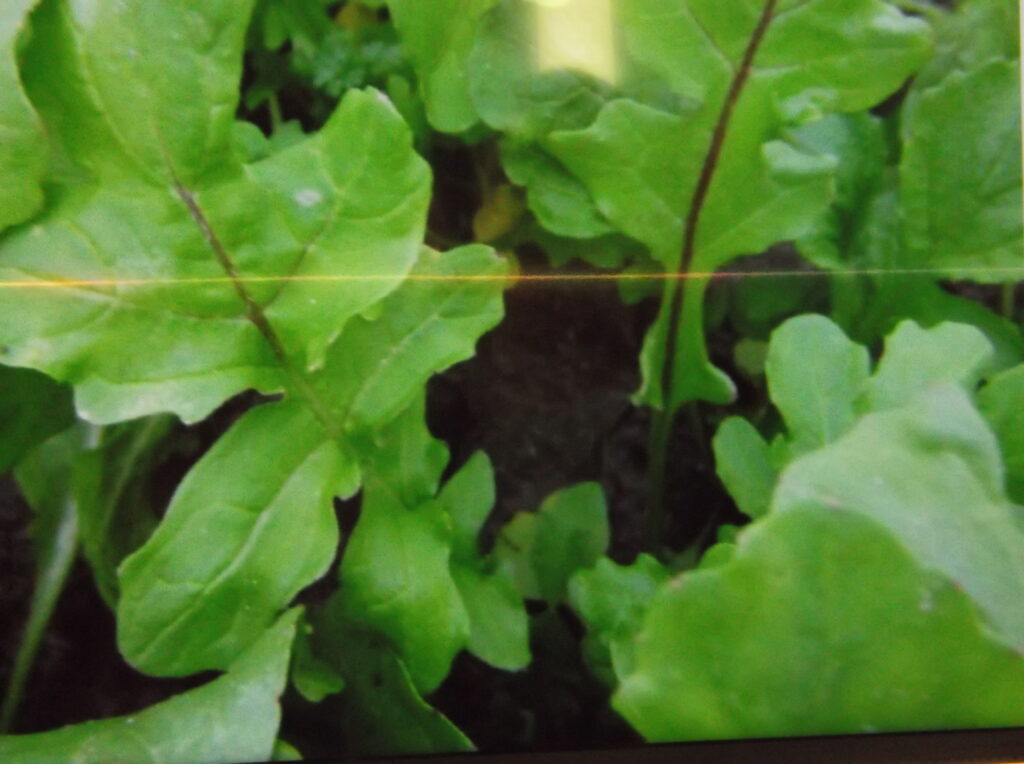
Brisebois launched his talk with his experience with some arugula plants that had gone to seed, which he collected, stored, forgot about and then rediscovered, cleaned them up, kept them for another three years and now two decades later is still harvesting seeds from those original plants. In the above photo is Arugula, the plant that sent Dan on his seed harvesting career.
He followed this stating that, ”growing your own seeds does not compromise
quantity.”
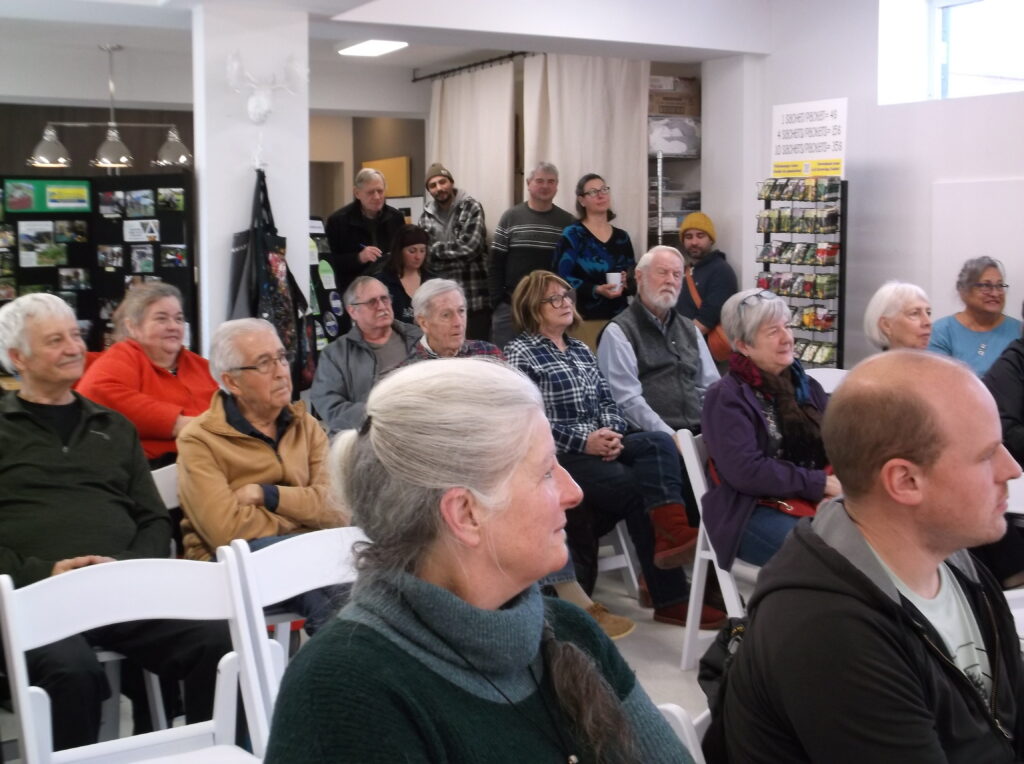
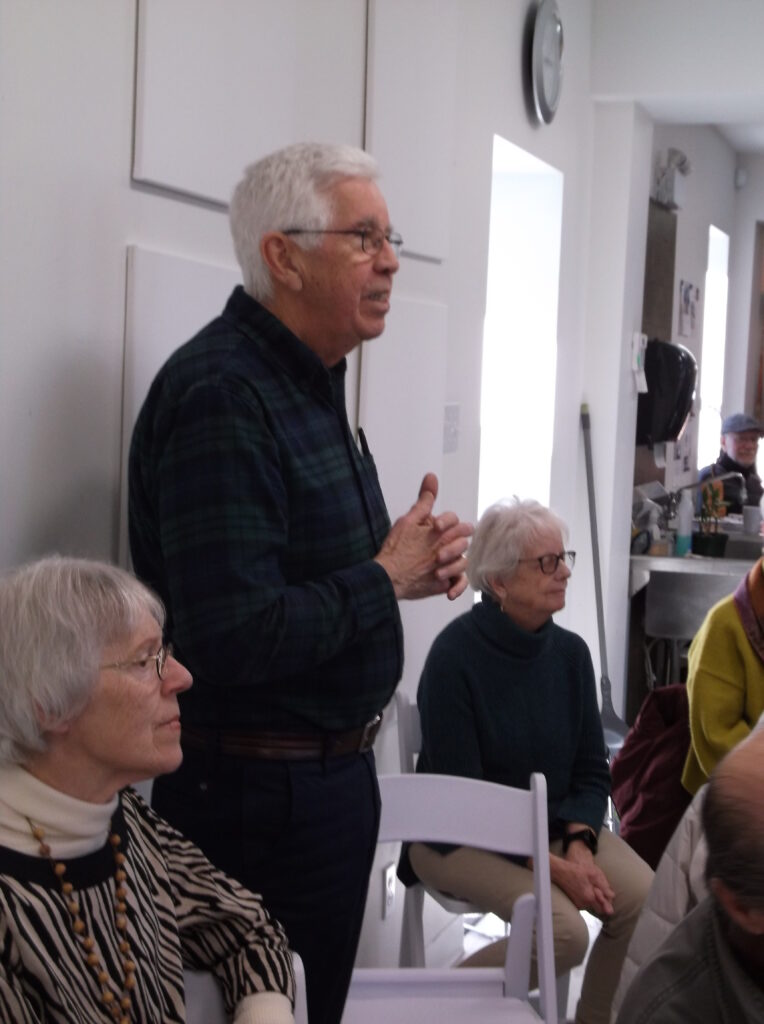
With this reassurance, Dan next told the audience that those starting in the seed business did not need to make a large capital outlay, and that it was better to start small. Almost the worse that can happen is that you will have a number of flowering leafy vegetables that attract pollinators, ensuring future pollination.
The book is broken down into three sections.
Beginning with the “start-up,” which he again emphasized should be small. He
next advised to stay away from various squash plants, as there are just too many varieties and to begin with annuals, such as peppers or tomatoes. He noted that green leafy vegetables are also a good bet, as you will have their flowers as a bonus. Once comfortable, Dan recommended that the newbie seed farmer should challenge themselves with some bi-annuals.
In section two he suggests that your settle on a plant you are comfortable
working with, with the easiest being sweet and hot peppers. He warns, however, that the varieties should be kept apart as cross-pollination can result in a “hot” sweet pepper or worse a “mild” hot pepper.
This bridge crossed, it is now time to use better tools of the trade and techniques, to push your work further.
Having accomplished all of these steps, Dan stresses that the farmer should
become a seed steward in maintaining old varieties and even work towards
developing new varieties
Now the fun is over, the book has a chapter on the seed economy, followed by
marketing your seeds through sales or trade.
Dan ended his information packed presentation with these words of wisdom.
“Don’t forget to label what seeds you have placed in each storage container.”
The book is available for $44.95 either at his farm’s store or by emailing:
boutique.fermetournesol.qc.ca



